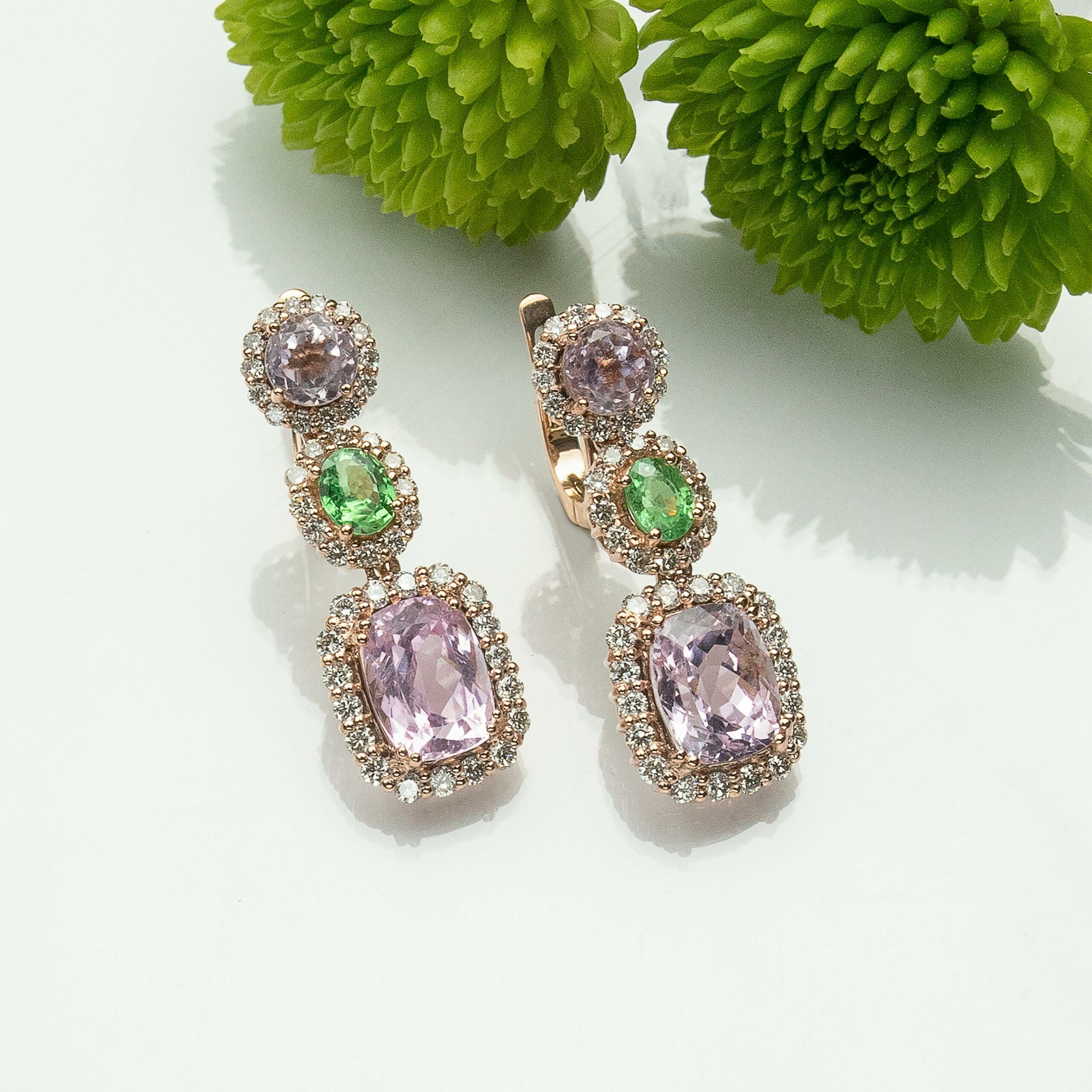
Inside the Human Body: Biology Made Easy
Anatomy is a fascinating subject and getting to delve inside the human body allows for children to learn about their own bodies. Our bodies have multiple organs that have very specific functions. These functions are what keep us alive.
Through delicate processes and functional operations, our bodies control our physical selves and allow us to breathe, run, and protect us. Learning about the inside of the human body is an important part of anatomy or biology.
Table of Contents

There are plenty of resources that help us explain and understand this science and how our bodies work. Biology can be made easy by communicating the details via creative content like video.
Inside the Human Body: The Heart
The heart is one of the most important organs in the human body. The heart’s main role in the body is to pump blood through the veins and the arteries to different parts of the body.
Inside the human body, veins carry the blood to the heart and the arteries carry the blood away from the heart. The arterial blood contains oxygen, as the heart is the main source of oxygen dispensation in the body.
Oxygen is integral to human survival, without it, we will die. The heart and the lungs make up the circulatory system with a complex system of veins and arteries.
These are integral for connecting the body to the heart, thus ensuring that our blood remains oxygenated and we are able to expend energy safely. Oxygen is what gives our bodies energy to participate in activities and function daily.
An incredible organ, the heart manages to transport this blood inside the human body through pumping. The heart pumps by contracting and relaxing and it is made up of four chambers. These chambers are known as ventricles and atria.
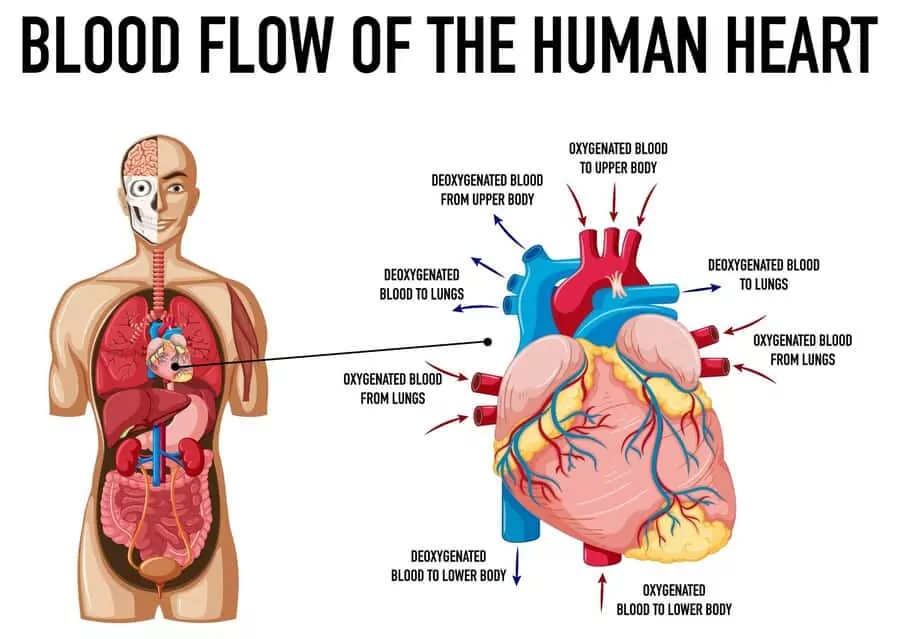
The chambers on the top level are called the left atrium and the right atrium. While the chambers at the bottom are referred to as the left ventricle and the right ventricle. These chambers have a specific purpose of keeping the oxygenated and deoxygenated blood separated.
The rich oxygenated blood that flows from the lungs arrives into the left atrium and it is pumped out to the rest of the body from here. The deoxygenated blood flows into the right atrium and backs out into the right ventricle to the lungs. This appears like a loop and is the way the body is able to maintain oxygen.
Incredibly, these tasks are achieved all in one beat from the heart. The average heart rate of a human is 72 beats per minute. So, for the average person, when someone reaches 66 years of age, their heart would have beaten 2.5 billion times.
An incredible achievement. Looking after your heart is integral to a happy and healthy life. In order to keep your heart healthy, you shouldn’t smoke, you should do regular exercise, eat lots of fruits and vegetables, and manage your intake of sugar and fats.
The heart never stops beating, so that’s why we should ensure we are doing everything to protect it and keep it safe.
For us to be active, to help us breathe, and to make sure all our organs receive the blood and oxygen needed to function, we have the heart to thank for it.
It is part of the circulatory system but acts as a control panel to make sure blood is being directed to the right places inside the human body. An incredible organ that simply can’t live without.
https://www.youtube.com/watch?v=SA7XEp_97FQ
Inside the human body: Facts about the water in you!
Water is like the body’s secret ingredient for staying healthy and feeling good. Did you know that about 60% of our body is made up of water? It’s true! Every cell, muscle, and organ in our body needs water to function properly.
Water helps to carry important nutrients, like vitamins and minerals, to our cells, and it also helps to remove waste and toxins from our body. Staying well-hydrated by drinking enough water every day is like giving our body a big hug. It helps us think, move, and grow, making us feel energized and strong.
Water plays a crucial role in maintaining the body’s balance and supporting various functions. It helps regulate body temperature, keeping us cool when it’s hot and warm when it’s cold. Water also cushions our joints, making movement smooth and pain-free.
It aids in digestion by breaking down food in our stomach and transporting nutrients throughout our body.
Furthermore, water is essential for our skin, making it look healthy and feel soft. It helps flush out waste and toxins through our kidneys, ensuring that our body stays clean and functioning well. When we don’t drink enough water, we might feel tired, dizzy, or even get a headache.
So, drinking water not only makes us feel better but also keeps our body in tip-top shape, allowing us to grow, learn, and play to our heart’s content.
So, remember to drink your water to keep your body long and strong!
Inside the human body: Facts about the Bones
Inside the human body, there is a structure that holds us together. The structure is known as the skeleton and it is made up of a variety of bones that hold us all together and also protect our vital organs.
Not only that, but the bones also manage to help us stand up straight and support the body’s physical functions. Bones are incredibly complex objects made up of many different materials. Inside the human body, 70% of our bones are made from hard minerals like calcium.
Interestingly as well, the bones are traditionally broken down into four different parts: the periosteum, the compact bone, the cancellous bone, and the bone marrow. The periosteum is the outer part of the bone and it is a thin, very dense layer that has nerves and blood vessels.
The compact bone is very hard and smooth. The cancellous bone has the appearance of a sponge but is incredibly tough, despite its visuals. The bone marrow looks like a jelly-like substance and it has an incredibly important function as it makes new blood cells for the body.
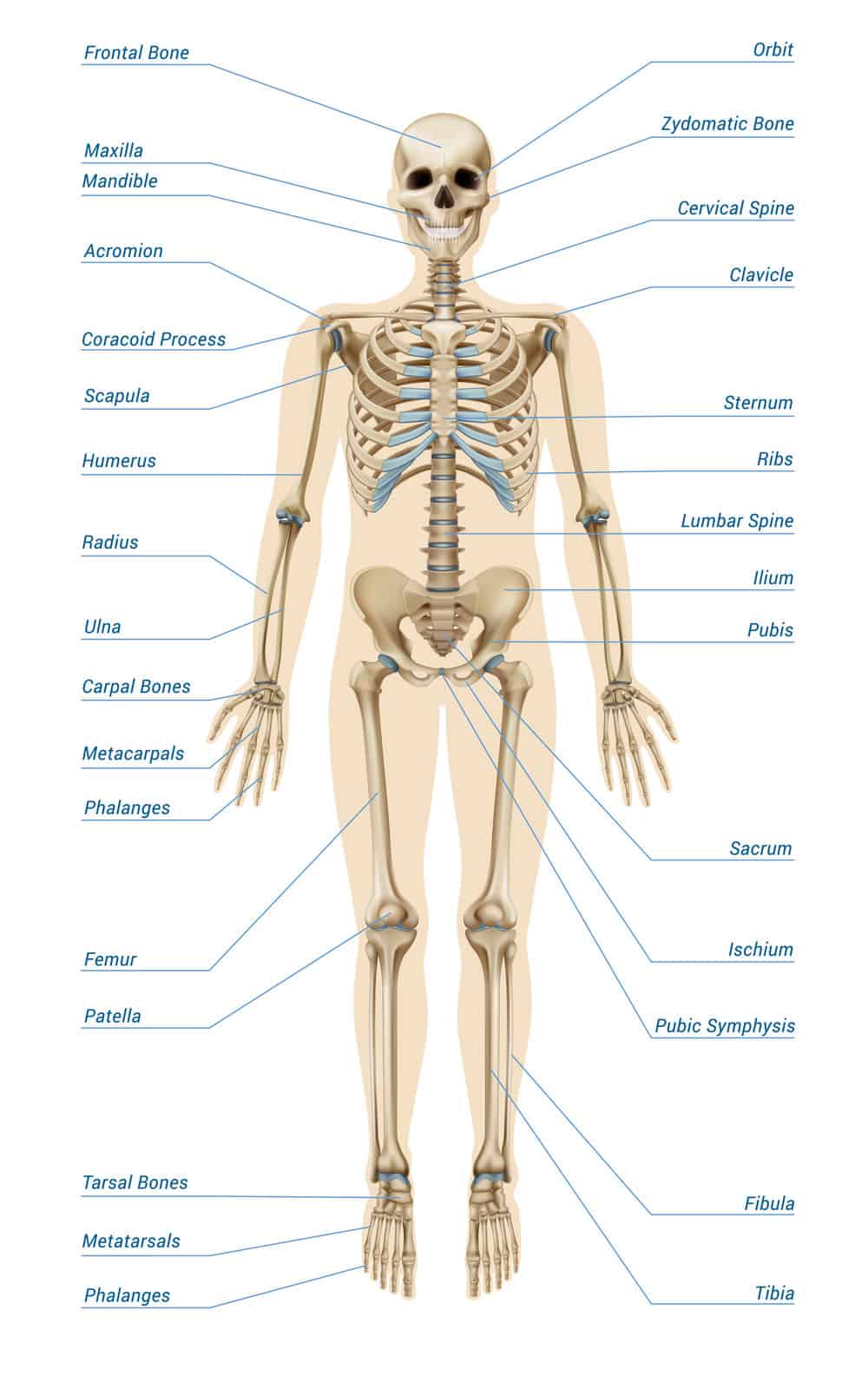
When babies are born, they have more than 300 parts of bones. During the growing process, babies are learning ways to move their bodies that promote good and healthy function, this means that some of their bones haven’t fully developed.
Most baby bones are made entirely or partly of cartilage which is slowly replaced with harder bones which is why weight gain can be significant in young babies and toddlers. Some of their bones join together as well to form one larger bone.
By the time children are fully developed and they have reached adulthood, they end up having 206 bones inside the human body.
The skeletal system is what helps us move and there are bones in the body that are specifically designed to allow for that to happen. Any place where two bones meet is called a joint.
There are a variety of joints, as some joints are fixed and, thus, do not move. Other joints move a little, like those little bones in the spine, then there are joints which move a lot, but require muscles to move.
To ensure we keep our bones in good condition and shape, we need to eat healthy food that is rich in calcium and make sure that, as we exercise, we protect our bones accordingly.
So, if you want to go cycling, make sure you wear a helmet. Our bones are so important inside the human body. They protect us, they let us move, and they serve important functions in cell creation.
https://www.youtube.com/watch?v=KWnvP97FdX0
Inside the Human Body: The Brain
The brain is an amazing organ that controls everything we do. It is like the boss of our body, telling us how to think, feel, and move. Without the brain, we wouldn’t be able to do anything!
The brain is protected by the skull, which is like a strong helmet. Inside the brain, there are billions of special cells called neurons. These neurons talk to each other by sending electrical signals, like tiny messengers carrying important information.
One of the brain’s important jobs is to help us understand the world around us. It works together with our senses, like our eyes, ears, nose, tongue, and skin, to help us see, hear, smell, taste, and touch things. When we see a rainbow, hear our favorite song, or feel a warm hug, it’s the brain that helps us experience those things.
The brain is also responsible for thinking and solving problems. It helps us learn new things and figure out tricky puzzles. Have you ever wondered why you remember things? It’s because the brain has a special memory system that keeps track of all the things we learn and experience.
Did you know that the brain is in charge of our feelings too? It has a special part called the limbic system that controls our emotions. When something makes us happy, sad, or scared, it’s the brain that makes us feel that way.
But the brain doesn’t just think and feel. It also helps us move! It talks to our muscles and tells them what to do. Whether we’re jumping, running, or even blinking our eyes, it’s the brain that sends the signals to make our body move.
The brain has different parts that each have their own special jobs. The outer part, called the cerebral cortex, helps us think and understand things. The cerebellum at the back of the brain helps us balance and coordinate our movements. The brainstem, which connects the brain to the rest of our body, controls important things like our heartbeat and breathing.
Scientists are always learning more about the brain, but there is still so much to discover. They use special machines to study the brain, like the MRI and EEG, which take pictures and measurements to help them understand how the brain works.
Without our brains, we wouldn’t be able to do all the amazing things we can do. So let’s take good care of our brain and keep learning more about this fascinating organ inside our heads!
Inside the Human Body: The Liver
The liver is an essential organ that plays a crucial role in keeping our bodies healthy. It’s like a super worker that performs many important tasks to help us stay strong and function well.
Located in the upper right side of the abdomen, the liver is the largest internal organ in our body. It’s a reddish-brown organ with a smooth surface, and it weighs about as much as a small football.
One of the liver’s main jobs is to filter and clean our blood. It acts as a special filter that removes harmful substances from our bloodstream. When we eat or drink, the liver helps break down nutrients and get rid of toxins, like chemicals or medicines, that could harm our bodies. It’s like a superhero protecting us from bad stuff!
The liver also helps us digest food. When we eat, the liver produces a special liquid called bile. Bile is stored in a small sac called the gallbladder and helps break down fats from the food we eat. So, thanks to the liver, our bodies can absorb the good nutrients from the food we eat and turn them into energy.
Another important job of the liver is to store energy for later. It stores a special kind of sugar called glycogen. When our bodies need extra energy, the liver releases the stored glycogen to keep us going. It’s like having a backup battery that we can rely on when we’re running low on energy.
But that’s not all! The liver also makes proteins that our bodies need. These proteins help with important things like clotting blood to stop bleeding when we get hurt. They also help fight off infections and keep our muscles strong and healthy.
The liver is truly a multitasking organ, and it even helps with recycling. When old red blood cells break down, the liver helps recycle their parts and gets rid of the waste. It’s like being an eco-friendly organ that takes care of our body’s resources.
Just like other organs, the liver can get sick too. Some things, like drinking too much alcohol or eating unhealthy food, can hurt the liver and make it harder for it to do its job. But the liver is resilient and can often heal itself if we take good care of it.
It filters our blood, helps us digest food, stores energy, and makes important proteins. Let’s remember to take care of our liver by eating nutritious food, drinking plenty of water, and avoiding things that could harm it.
Inside the Human Body: The Pancreas
The pancreas is a small but mighty organ that plays a vital role in keeping our bodies balanced and healthy. It may not get as much attention as some other organs, but its functions are incredibly important for our well-being.
Located deep in the abdomen, behind the stomach, the pancreas is a long, flat gland. It’s a bit like a superhero with a secret identity because it has two main jobs: producing digestive juices and releasing hormones that help regulate our blood sugar levels.
Let’s start with its digestive role. The pancreas produces special juices that contain powerful enzymes. These enzymes are like tiny helpers that break down the food we eat into smaller pieces. They work together with other digestive organs, like the stomach and small intestine, to make sure our bodies can absorb all the important nutrients from our meals. Without the pancreas, our digestive system wouldn’t function properly.
But the pancreas has another superpower – it produces hormones that help control our blood sugar levels. One of the most important hormones it produces is called insulin. Insulin acts like a key that unlocks the doors of our cells, allowing glucose (sugar) from the food we eat to enter and provide energy. When we eat, the pancreas releases insulin to help keep our blood sugar at the right level. This is crucial because too much or too little sugar in our blood can cause problems.
When the pancreas doesn’t produce enough insulin or if the body doesn’t use insulin properly, it can lead to a condition called diabetes. Diabetes is when the blood sugar levels are too high and need extra help to be regulated. People with diabetes often need to take insulin or other medications to help their bodies maintain a healthy balance.
Although the pancreas is a small organ, it packs a big punch when it comes to our overall health. Just like other organs, it’s important to take care of the pancreas so it can do its job effectively. Eating a balanced diet with plenty of fruits, vegetables, and whole grains, and avoiding excessive consumption of sugary and fatty foods, can contribute to a healthier pancreas.
The pancreas may be small, but its contributions are mighty. From producing digestive juices to helping regulate blood sugar levels, this organ plays a critical role in our body’s functioning.
Have you found this interesting? Come and check our human body facts for kids: 11 Secrets Inside The Human Body, The Human Heart and the Cardiovascular System, The Human Heart, 5 Types of hobbies that could boost your brain and body, How Does Your Amazing Brain Work? and 10 Astonishing Heart Facts for Kids.
Why not subscribe to our LearningMole Library for as little as £1.99 per month to access over 1400 fun educational videos
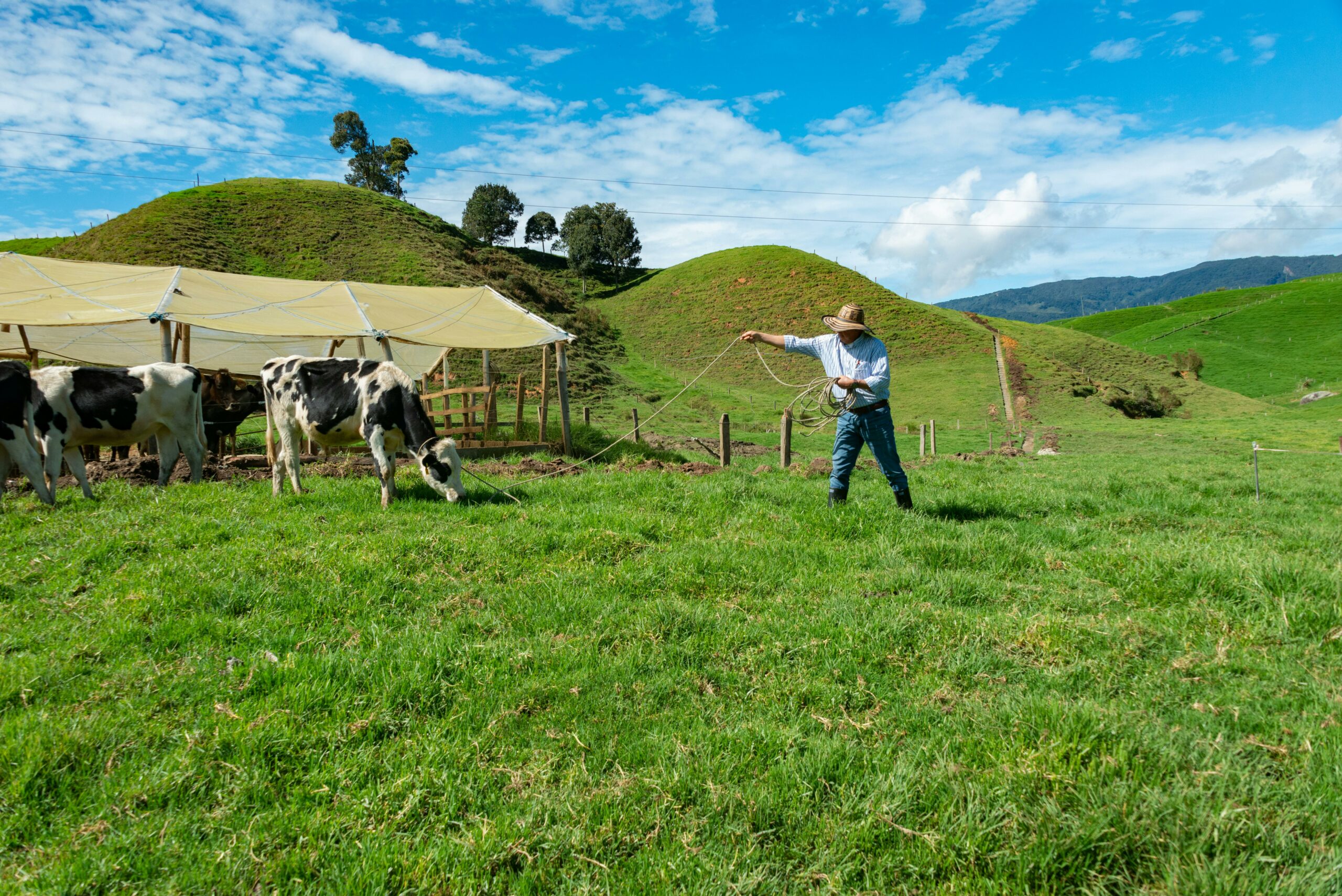
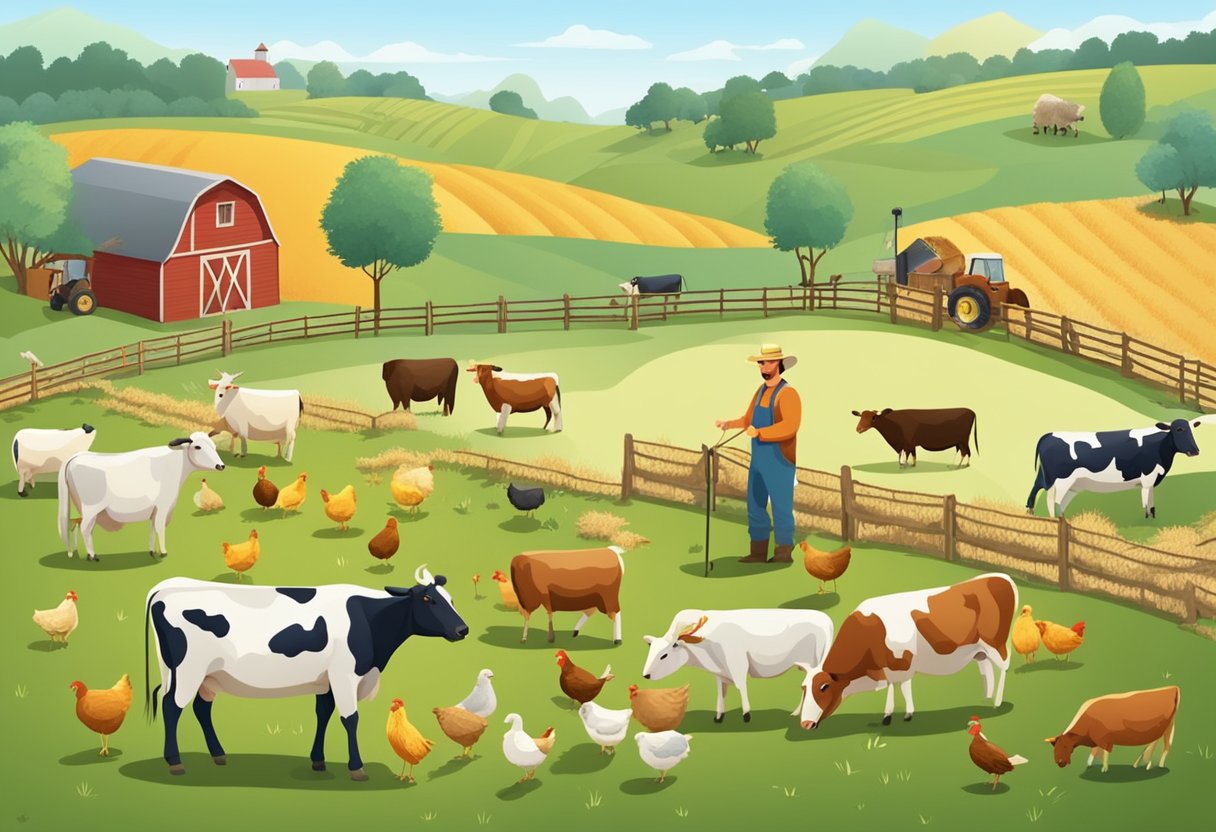
Leave a Reply